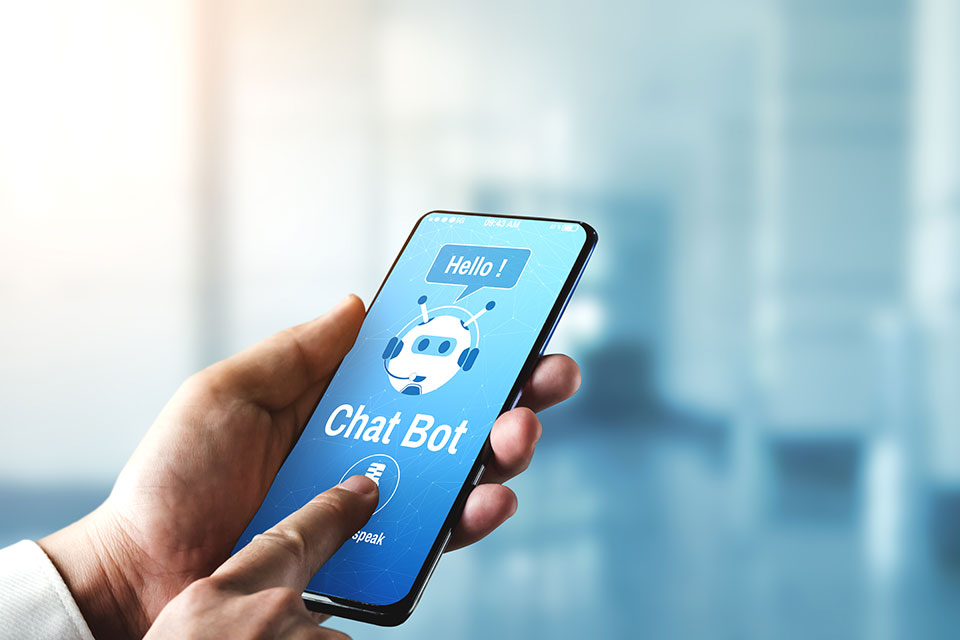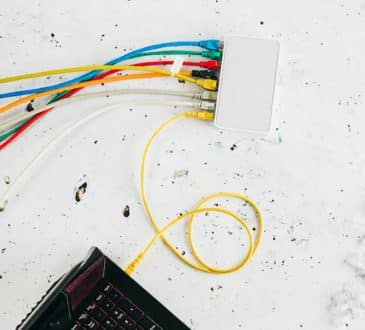What you need to know when developing a company chatbot

Intelligent chatbots are providing new advantages to companies in a variety of fresh and sometimes surprising ways. For companies that want to bolster in-house communication among team members or incorporate chatbots into the hiring process, ensuring that the technology meets ethical and legal standards is paramount. Here’s what companies should keep in mind during chatbot development.
When companies seek to cultivate or maintain relationships with their customers, employees, and stakeholders these days, turning to a machine usually isn’t top of mind. But thanks to ongoing advances in AI like machine learning and natural language processing, intelligent chatbots are providing new advantages to companies in a variety of fresh, creative, and sometimes surprising ways.
While they can certainly enhance internal communications, chatbots could prove useful for engaging external audiences as well. For companies considering bolstering in-house communication among team members or incorporating chatbots into the hiring process, ensuring that the technology meets ethical and legal standards is paramount. To that end, keep these three things in mind during your chatbot development:
- Test to Mitigate Bias
Chatbots should never be used to evaluate candidates or employees because the risk of discrimination arising from linguistic and algorithmic bias is simply too great. However, the technology could be valuable for making the hiring funnel a more conversational experience and foregrounding the hiring organization’s brand voice and tone.Chatbots can add a dynamic element to the first interaction between employer and candidate, giving a company opportunities to introduce its brand voice while providing prospective hires with useful information about the interview process. For applicants, this represents a much richer interaction than a webpage containing nothing but text and forms.
Bias in artificial intelligence is inevitable, especially when it comes to natural language processing. Teams creating programs that detect nuances in user text might consider conversational only the styles and dialects they’re used to, which could make interacting with the technology frustrating for some applicants. As a result, your chatbot might be able to facilitate only limited conversation with some users.
Improve it by testing the experience with users not connected to the project, and make sure the participants in your study represent a diverse group that’s similar to the audience you’re targeting. In UX, this is called usability testing, which is critical for discovering functional limitations, design inconsistencies, and unexpected stylistic outcomes in your technology (and for collecting valuable user feedback).
Of course, you’ll want your legal team to review the chatbot’s interactions, but just because a process is legal doesn’t mean it’s ethical or effective. Conversation designers must strike a balance between keeping the business out of legal trouble and producing a conversational style that comes across as genuine, inclusive, and empathetic.
- Avoid Linguistic Appropriation
If you’re leading a company in today’s environment of uncertainty, keeping employees engaged must be a true top priority. Given the shift to remote work, it might also be a major challenge.Ensuring that teams are in sync, sharing updates to company policies, collecting employee information for HR purposes, and similar administrative and project management functions require clear, timely communication — especially within larger companies and those with geographically dispersed teams. But when employees are working remotely, perhaps across time zones, manually delivering those communications isn’t always easy. Chatbots can help with those internal tasks.
Your chatbot should match the conversational style of your target audience (be it internal, external or both), but it shouldn’t use language that portrays your company as something it’s not. Chatbots as a tool seem innocuous enough, but users view this tool as representative of the institution behind it. They’ll evaluate their interaction with it against the backdrop of institutional racism and sexism endemic in corporate America. If the conversation doesn’t seem genuine, applicants will assume that you’re trying to manipulate them or misrepresent your company.
Back in the early 2000s, when the Queen of Pop, Madonna, moved to England and suddenly adopted an affected British accent despite her Michigan roots, she was widely criticized. Your chatbot isn’t a global music icon, but people will notice how it communicates. If that style aligns with the way your users and customers communicate and accurately reflects your company’s culture, they’ll likely feel even more connected to — and thereby excited about — the prospect of joining your organization.
- Design Genuine Conversational Interactions With Employees
Conversation is a great mechanism for establishing a connection between people and institutions. It’s likely that between the pandemic and various crises that have occurred over the past several months, both employees and employers are exhausted — and more isolated than ever.Sometimes, the energy to check in feels like moving a mountain; the same goes for responding to a check-in. But if a company wants to address their employees’ increased anxiety to mitigate potential decreased engagement, expanding your external-facing chatbot to help check in with internal employees could signal that the organization is invested in trying multiple ways of staying connected. Chatbots can be great outlets for users who wish to confide in an entity that won’t judge them or assess their tones against the company’s party line.
For example, use it for daily check-ins for employees who have already been notified they have been exposed to someone with COVID-19: “Have you tested positive or are you experiencing any COVID symptoms since the last check-in?” Share daily wellness tips or use it to announce or provide access to new benefits (if the employee opted in). Position it as a tool that employees can use to find the right help, rather than a monitoring tool. Not everyone will want to use it, but if those who do find it valuable, your entire organization will benefit.
Written by Greg Bennett.
Add CEOWORLD magazine to your Google News feed.
Follow CEOWORLD magazine headlines on: Google News, LinkedIn, Twitter, and Facebook.
This report/news/ranking/statistics has been prepared only for general guidance on matters of interest and does not constitute professional advice. You should not act upon the information contained in this publication without obtaining specific professional advice. No representation or warranty (express or implied) is given as to the accuracy or completeness of the information contained in this publication, and, to the extent permitted by law, CEOWORLD magazine does not accept or assume any liability, responsibility or duty of care for any consequences of you or anyone else acting, or refraining to act, in reliance on the information contained in this publication or for any decision based on it.
Copyright 2024 The CEOWORLD magazine. All rights reserved. This material (and any extract from it) must not be copied, redistributed or placed on any website, without CEOWORLD magazine' prior written consent. For media queries, please contact: info@ceoworld.biz
SUBSCRIBE NEWSLETTER








